Birds are fascinating creatures that come in all sorts of colors and sizes. Some are bright and flashy, catching our attention with their vibrant plumage, while others prefer to stay understated and blend into the world around them. In this journey through the world of birds, we’ll be focusing on a group of feathered friends who often go unnoticed – the small gray birds with white bellies.
You might wonder, “Why gray?” Well, gray is a color of subtlety, a shade that allows these birds to navigate their habitats with a certain grace, avoiding the spotlight. But don’t be fooled by their unassuming appearance; these birds have their own unique charm and stories to tell.
In this blog post, we’ll introduce you to 13 small gray birds with white bellies. We’ll uncover the secrets of their beauty, learn about their habitats, and explore what makes them so special in the world of birds.
List of Gray Birds with White Bellies
- Tufted Titmouse
- European Crested Tit
- Eastern Phoebe
- Willow Flycatcher
- Dark-Eyed Junco
- Blue-Gray Gnat Catcher
- Sagebrush Sparrow
- Carolina Chickadee
- Black-Capped Chickadee
- Northern Mockingbird
- White-Breasted Nuthatch
- Bushtit
- Mountain Chickadee
Tufted Titmouse

- Scientific name: Baeolophus bicolor
- Lifespan: 2.1 years
- Size: 5.5–6.3 in
- Native to: Nearctic region
The Tufted Titmouse (Baeolophus bicolor) is a small songbird found in eastern North America. With its distinctive tufted crest atop its head, this charming bird is easily recognizable. It has a grayish upper body, a white face, and rusty-colored flanks.
Tufted Titmice are highly active and social birds that inhabit woodlands, forests, and suburban areas. They have a varied diet, feeding on insects, seeds, berries, and nuts. These agile birds can be seen hopping from branch to branch or hanging upside down as they search for food.
During the breeding season, Tufted Titmice build cup-shaped nests in tree cavities or nest boxes, often lined with moss, fur, and feathers. They lay a clutch of 5 to 8 eggs, which are incubated by the female.
Known for their curious nature and distinctive “peter-peter-peter” song, Tufted Titmice is a delight to observe for birdwatchers and nature enthusiasts. Their lively presence and acrobatic foraging behaviors bring joy to any backyard or woodland encounter.
European Crested Tit

Image Source
- Scientific name: Lophophanes cristatus
- Lifespan: 3-4 years
- Size: 10-12 centimeters (4-5 inches)
- Origin: Europe
European Crested Tit (Lophophanes cristatus) is a small songbird native to Europe. This charismatic bird is known for its unique crest, which gives it a distinctive appearance. The crest consists of a combination of black, white, and rusty brown feathers.
European Crested Tits are typically found in coniferous forests and woodlands, where they forage for insects, seeds, and pine cones. They have a strong beak that enables them to extract seeds from cones and crack open insect exoskeletons.
These birds are highly skilled at clinging to tree branches and are often seen hanging upside down while foraging. They build their nests in tree cavities or old woodpecker holes, lining them with moss, feathers, and fur.
European Crested Tits are non-migratory and can be observed year-round in their respective habitats. Their enchanting appearance and lively behavior make them a delight for birdwatchers and nature lovers across Europe.
Eastern Phoebe

Image Source
- Scientific name: Sayornis phoebe
- Lifespan: 10 years
- Size: 5.5-6.7 in
- Native to: North America
The Eastern Phoebe (Sayornis phoebe) is a small, insect-eating bird native to eastern North America. This charming bird is known for its characteristic tail-wagging behavior and distinctive call, which sounds like “fee-bee” or “phoebe.”
Eastern Phoebes have a brownish-gray upper body and a pale yellowish underbelly. They often perch on branches or fences, waiting patiently to spot their prey. When they spot an insect, they swoop down to catch it in mid-air before returning to their perch.
These birds typically build their nests on ledges, cliffs, or man-made structures such as bridges and buildings. They use mud, moss, and plant fibers to construct cup-shaped nests, which they line with softer materials like feathers.
Eastern Phoebes are migratory birds, spending their winters in the southern United States and Mexico, and returning to their breeding grounds in the eastern regions during the spring. Their adaptable nature, insect-eating habits, and delightful songs make them a favorite among birdwatchers and nature enthusiasts.
Willow Flycatcher
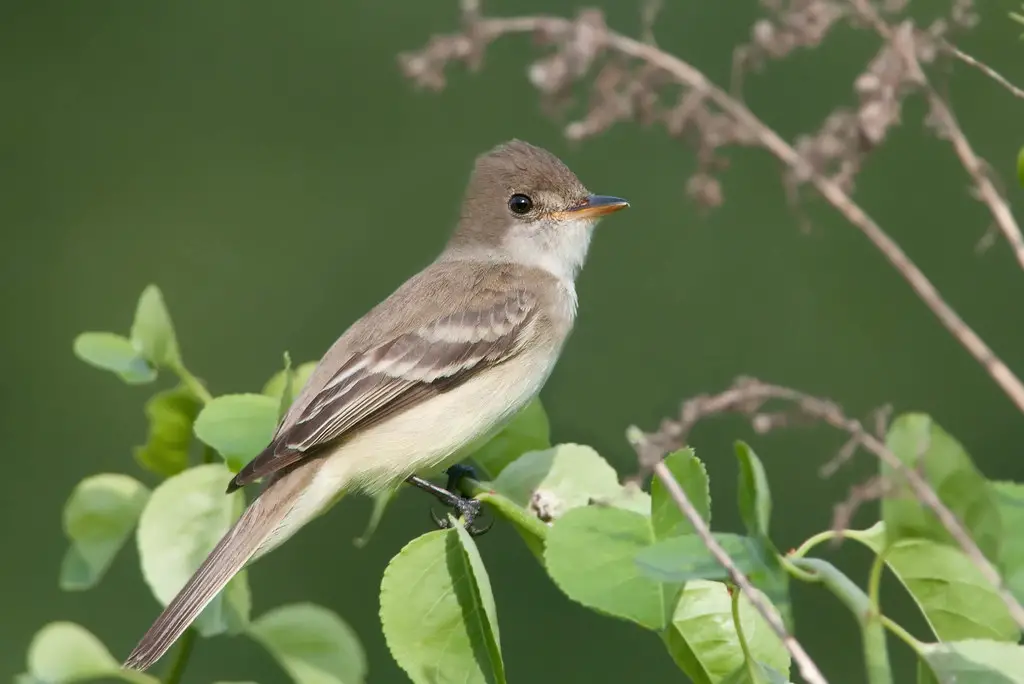
Image Source
- Scientific name: Empidonax traillii
- Lifespan: 2-6 years
- Size: 12-14 centimeters (5-6 inches)
- Origin: North America
The Willow Flycatcher (Empidonax traillii) is a small, migratory bird that breeds across much of North America. They are known for their distinctive “fitz-bew” song, which is a series of high-pitched, descending notes.
These birds are typically found in open woodland areas, often near streams or wetlands. They feed on insects, which they catch in mid-air or glean from vegetation. The Willow Flycatcher has olive-brown upperparts and a pale grayish-white underbelly with a yellowish tint.
Willow Flycatchers are known for their relatively low reproductive rates, with females typically laying only three to four eggs per year. They build their nests in dense shrubs, often near water sources. Conservation efforts have been made to protect the habitats of Willow Flycatchers, as their populations have declined due to habitat loss and degradation.
Dark-eyed Junco
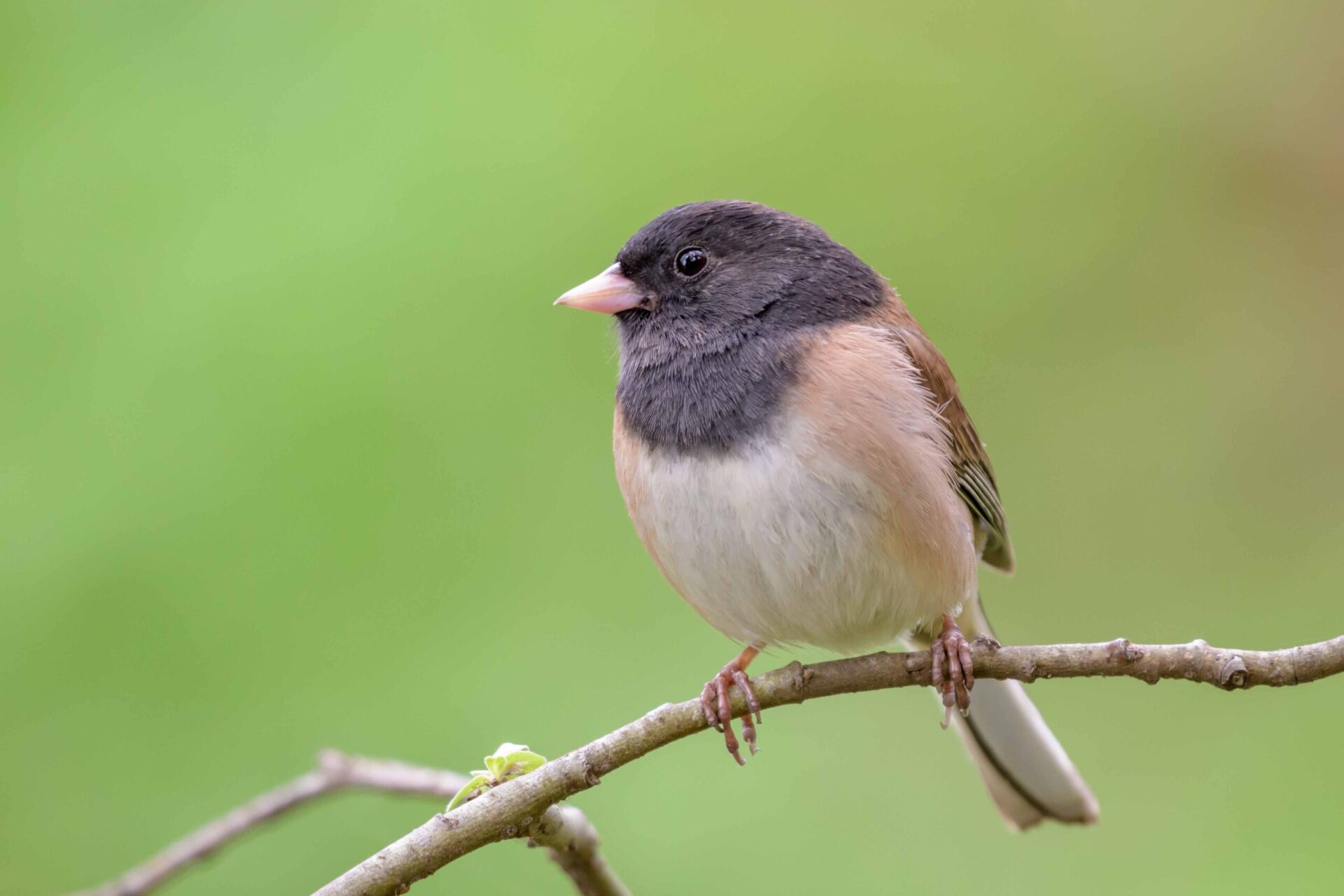
Image Source
- Scientific name: Junco hyemalis
- Lifespan: 3-11 years
- Size: 14-16 centimeters (5.5-6.3 inches)
- Origin: North America
The Dark-eyed Junco (Junco hyemalis) is a small, migratory bird that is widely distributed across North America. These charming sparrows are known for their distinctive plumage variations, with several subspecies displaying different color patterns.
The most common form, the “Slate-colored Junco,” has a dark gray to blackish upper body, white underparts, and a crisp white belly. Other variations include the “Oregon Junco,” “Pink-sided Junco,” and “Gray-headed Junco,” each with its own unique coloration.
Dark-eyed Juncos inhabit a variety of habitats, including forests, woodlands, and suburban areas. They primarily feed on seeds and insects, foraging on the ground with their characteristic hopping movements.
During the breeding season, Dark-eyed Juncos build cup-shaped nests on or near the ground, typically concealed among dense vegetation. Females lay a clutch of 3 to 5 eggs, which they incubate for about two weeks.
These adaptable birds migrate to different regions depending on the subspecies, with some residing year-round in certain areas. Their delightful presence and distinct color variations make them a favorite among birdwatchers, bringing joy to many nature enthusiasts.
Blue-gray Gnatcatcher

Image Source
- Scientific name: Polioptila caerulea
- Lifespan: 3-4 years
- Size: 3.9–5.1 in
- Native to: North America
The Blue-gray Gnatcatcher (Polioptila caerulea) is a small, insect-eating bird found in North America. With its vibrant blue-gray plumage, long tail, and white eye-ring, this agile bird is easily identifiable.
Blue-gray Gnatcatchers inhabit various wooded habitats, including forests, woodlands, and thickets. They are highly active and constantly on the move, flitting through foliage and catching insects in mid-air. These birds have a distinctive soft, high-pitched call that resembles a buzzing sound.
They construct exquisite cup-shaped nests, often using spider silk, lichens, and plant fibers, cleverly camouflaging them among the branches. The female lays a clutch of 3 to 5 eggs, which are incubated by both parents.
Blue-gray Gnatcatchers are migratory birds, spending the winter in the southern parts of their range and returning to their breeding grounds in the spring. Their insect-eating habits make them valuable in controlling pest populations.
These delightful birds bring liveliness and a splash of color to the woodlands, and their captivating behavior and songs make them a favorite among birdwatchers and nature enthusiasts.
Sagebrush Sparrow

Image Source
- Scientific name: Artemisiospiza nevadensis
- Lifespan: 2-3 years
- Size: 13-15 centimeters (5-6 inches)
- Origin: North America
The Sagebrush Sparrow (Artemisiospiza nevadensis) is a small songbird found in the sagebrush plains of western North America. They are often found in dry, arid habitats such as sagebrush, grasslands, and deserts.
Sagebrush Sparrows have distinctive streaky brown and gray plumage with a pale eyebrow and a dark eye patch. They have a sweet, melodic song and a soft, buzzy call.
These birds are ground-nesters and build their nests in grassy areas, using grass and other vegetation to construct a cup-shaped structure. The female typically lays a clutch of 3 to 5 eggs.
Sagebrush Sparrows are considered a species of concern due to habitat loss caused by human activities such as agriculture and energy development. Conservation efforts are underway to protect their dwindling populations and their unique habitat.
Carolina Chickadee
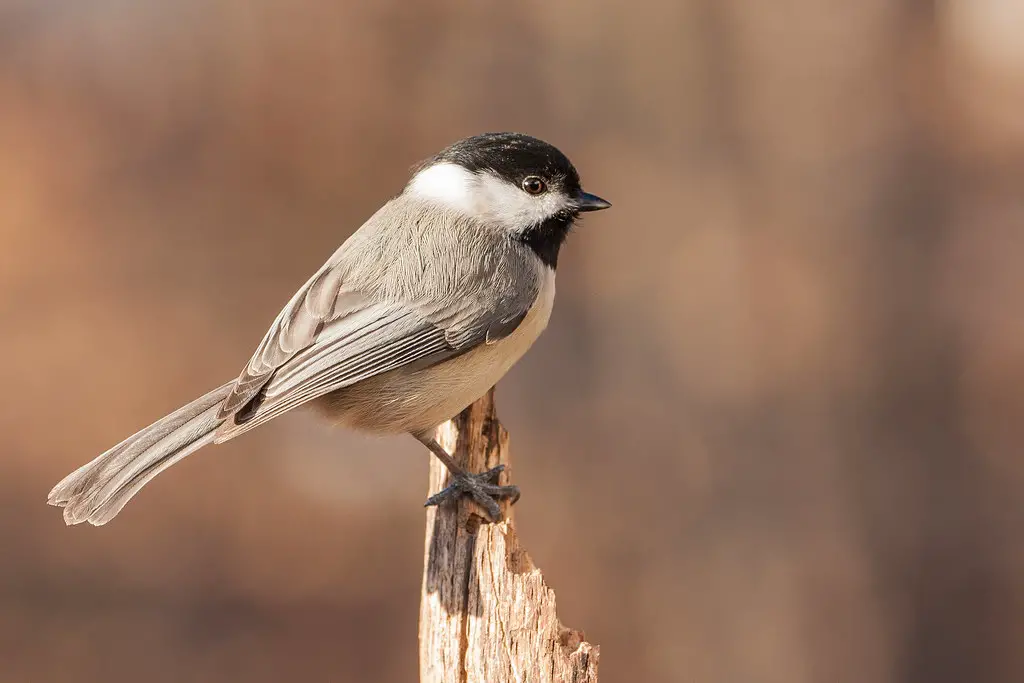
Image Source
- Scientific name: Poecile carolinensis
- Lifespan: 2-8 years
- Size: 11-13 centimeters (4-5 inches)
- Origin: North America
The Carolina Chickadee (Poecile carolinensis) is a small, lively bird native to the southeastern United States. With its striking black cap and bib, white cheeks, and grayish wings, this charming chickadee is a familiar sight in woodlands, parks, and suburban areas.
Carolina Chickadees are highly vocal, emitting their signature “chick-a-dee-dee-dee” call, which gives them their name. They are agile foragers, flitting from branch to branch, searching for insects, seeds, and berries. These birds are also known to cache food for later consumption.
During the breeding season, Carolina Chickadees excavate cavities in trees or use nest boxes. The female lays a clutch of 5 to 8 eggs, which are incubated by both parents.
These sociable birds often form mixed flocks with other species, such as titmice and nuthatches..
Black-capped Chickadee
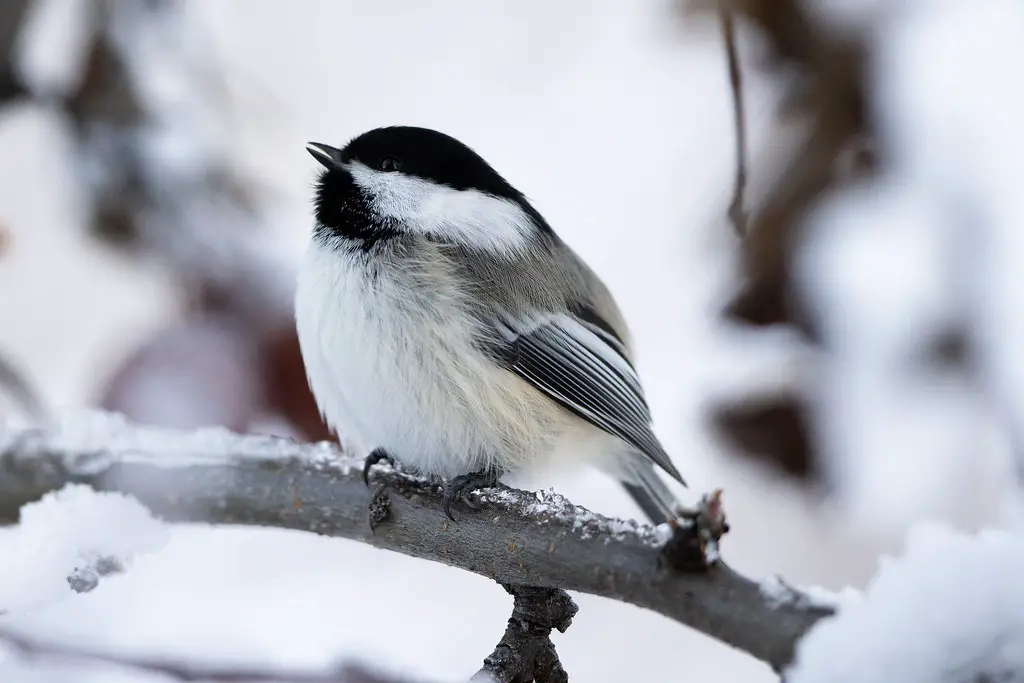
Image Source
- Scientific name: Poecile atricapillus
- Lifespan: 2-12 years
- Size: 12-15 centimeters (5-6 inches)
- Origin: North America
The Black-capped Chickadee (Poecile atricapillus) is a small, charismatic bird native to North America. With its distinctive black cap and bib, white cheeks, and grayish wings, this energetic chickadee is a common sight in forests, woodlands, and suburban areas.
Black-capped Chickadees are known for their cheerful songs and calls, including their signature “chick-a-dee-dee-dee” call. They are agile foragers, flitting from branch to branch, searching for insects, seeds, and berries. These birds have a remarkable ability to store food and can remember thousands of hiding places.
During the breeding season, Black-capped Chickadees excavate cavities in trees or use nest boxes. The female lays a clutch of 5 to 10 eggs, which are incubated by both parents.
Northern Mockingbird

- Scientific name: Mimus polyglottos
- Lifespan: about 8 to 10 years
- Wingspan: 12 to 14 inches
- Native to the United States and in Canada and Mexico
The Northern Mockingbird has blackish wings with dazzling white stripes, but it is not a completely black bird. Instead, it has a very dark grey overall look.
Black wings with white stripes stand out more while in flight because they flash like bright signals.
Both sexes of this common songbird resemble one another. The tail is black with white edges, matching the dark wings.
The underparts are buff white, and it has a brown eyestripe that contrasts with its yellow eye.
In much of the USA, the Northern Mockingbird is a famous garden bird and a year-round inhabitant. Along with Canada, the northernmost states also host it throughout the summer.
Only one species of the mockingbird is present in North America. They are mostly found in woodlands and urban environments with enough trees, such as parks and golf courses.
White-breasted Nuthatch

Image Source
- Scientific name: Sitta carolinensis
- Lifespan: 2-6 years
- Size: 13-15 centimeters (5-6 inches)
- Origin: North America
The White-breasted Nuthatch (Sitta carolinensis) is a small, lively bird found in North America. With its striking black, gray, and white plumage, this agile nuthatch is easily recognizable. It has a white face and chest, a black cap, and a long, slender beak.
White-breasted Nuthatches are known for their distinctive behavior of crawling headfirst down tree trunks and branches, searching for insects and seeds hidden in the bark. They are also skilled at wedging and hammering open seeds with their sturdy bills.
These birds nest in tree cavities, often excavating their own or using existing cavities. The female lays a clutch of 5 to 9 eggs, which are incubated by both parents.
White-breasted Nuthatches are non-migratory and can be observed year-round in their respective habitats. Their agile movements, distinctive calls, and ability to move in all directions on tree trunks make them a delight for birdwatchers and nature enthusiasts.
Bushtit
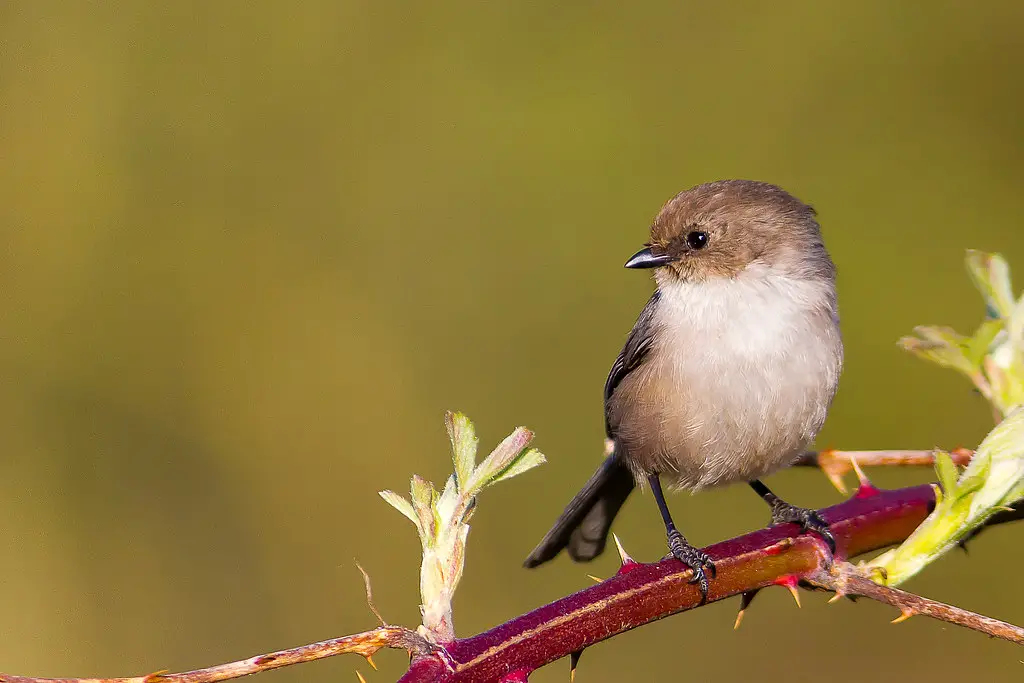
Image Source
- Scientific name: Psaltriparus minimus
- Lifespan: 2-7 years
- Size: 10-11 centimeters (4-4.3 inches)
- Origin: North America
The Bushtit (Psaltriparus minimus) is a small, sociable bird native to North America. These tiny birds are known for their fluffy appearance and their habit of traveling in large, chattering flocks.
Bushtits have grayish-brown plumage, long tails, and a stubby bill. They are highly acrobatic and are often seen hanging upside down from branches, searching for insects and spiders. They also feed on berries and small seeds.
These birds build intricate, pendant-shaped nests made of moss, spider webs, and plant fibers. The nests are often concealed in dense foliage, providing protection for their eggs and young.
Bushtits are cooperative breeders, with multiple individuals assisting in nest building and raising the young. Their social nature and synchronized movements within the flock are a remarkable sight to behold.
Mountain Chickadee (Small Gray Birds with White Bellies)

Image Source
- Scientific name: Poecile gambeli
- Lifespan: 2-9 years
- Size: 11-14 centimeters (4-6 inches)
- Origin: North America
The Mountain Chickadee is a small, energetic bird found in mountainous regions of western North America, ranging from Alaska to Arizona. With its gray cap and black throat patch, it is easily recognizable. Its body is mostly a soft, muted gray, while its wings and tail are a darker shade of brown-gray. Mountain Chickadees are highly social and can often be seen in flocks of up to a dozen birds, chattering and flitting through coniferous forests. They are adept at foraging for insects and seeds in the trees, using their sharp beaks to extract food from crevices in the bark. During the breeding season, they excavate their own nest cavities in soft, rotting wood.
Final Thoughts on Gray Birds with White Bellies
In the realm of avian beauty, gray birds with white bellies stand as a testament to the elegance found in understated contrasts. Through our journey, we have uncovered the allure of their muted coloration and witnessed their resilience in adapting to diverse habitats. These birds teach us to appreciate the beauty that lies in subtlety and remind us of the intricate interconnectedness of our natural world. As we bid farewell to these enchanting creatures, let us carry their lessons with us, seeking the hidden marvels and harmonious contrasts that exist not only in the avian realm but in every corner of nature’s breathtaking tapestry.
Further Readings
- Gray Birds in North America
- Gray Birds with Yellow bellies
- Black Birds with Gray Heads
- Gray Birds with Red Heads
Frequently Asked Question
What are gray birds with white bellies?
Gray birds with white bellies are a group of avian species characterized by their predominantly gray plumage with a contrasting white coloration on their bellies. This unique color combination sets them apart and adds to their understated elegance.
How can I attract gray birds with white bellies to my backyard?
To attract gray birds with white bellies, you can provide suitable habitat elements such as shrubs, trees, and water sources. Offering a variety of bird feeders with appropriate food, such as seeds and insects, can also help attract these birds. Additionally, maintaining a safe and predator-free environment will make your backyard more inviting to them.
How can I learn more about gray birds with white bellies?
You can expand your knowledge about gray birds with white bellies by referring to field guides, birding websites, and birding communities. Local birdwatching groups or nature centers may also organize educational events or guided birding tours where you can observe and learn more about these fascinating creatures in their natural habitats.


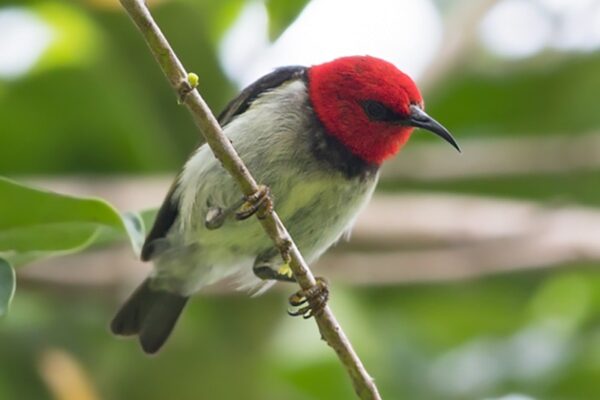
![23 Beautiful Grey Birds in North America [Images + IDs]](https://birdsology.com/wp-content/uploads/2023/06/4781582316_225694b7d8_b-600x400.jpg)
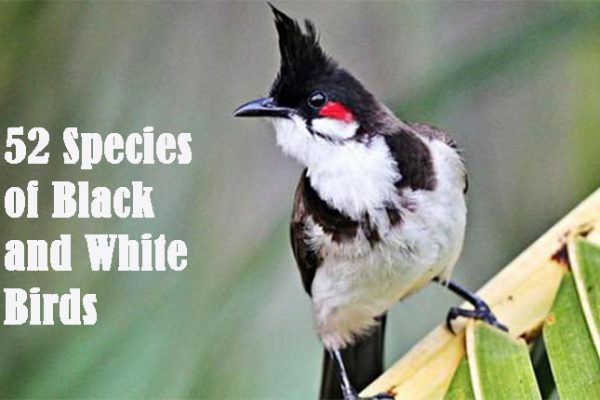
![17 Mesmerizing Blue and Red Birds [Images + IDs]](https://birdsology.com/wp-content/uploads/2023/09/8118432078_c99729e39b_c-600x400.jpg)
One thought on “Gray Birds with White Bellies [Beauty in Subtle Contrasts]”